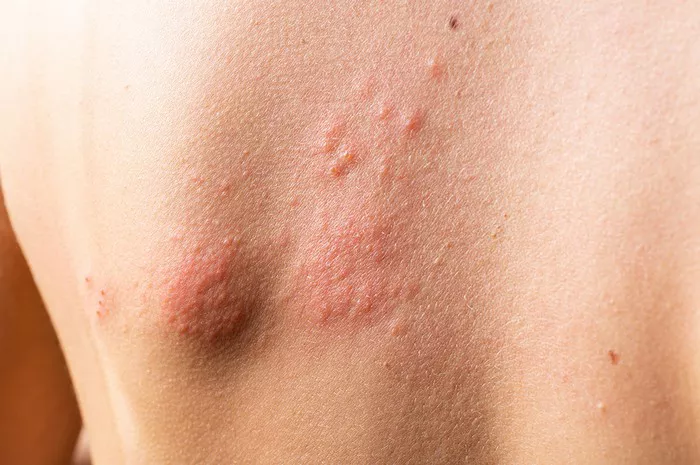Shingles, also known as herpes zoster, is a viral infection caused by the varicella-zoster virus—the same virus that causes chickenpox. While it is most common among older adults and individuals with weakened immune systems, it can affect anyone who has had chickenpox in the past. Shingles typically presents as a painful rash that manifests as fluid-filled blisters, which can be accompanied by itching, burning, and sensitivity to touch. Managing the discomfort and preventing the spread of the virus are essential aspects of shingles treatment. One way to address these concerns is by effectively covering the shingles rash. In this article, we’ll explore various options for covering shingles rash, from medical interventions to practical home remedies, to provide relief and promote healing.
Understanding Shingles Rash
Before delving into methods for covering shingles rash, it’s crucial to understand the nature of the condition. Shingles rash typically appears as a unilateral rash, meaning it affects only one side of the body, often in a band-like pattern. The rash can develop anywhere on the body, but it most commonly occurs on the torso, particularly around the chest and abdomen. In some cases, it may affect the face, eyes, or other parts of the body.
The rash begins as red patches of skin that evolve into fluid-filled blisters over the course of a few days. These blisters can rupture, forming crusts that eventually dry out and heal. The entire process can take two to four weeks, during which time the affected individual may experience significant discomfort.
Importance of Covering Shingles Rash
Covering shingles rash serves multiple purposes. Firstly, it helps protect the affected area from external irritants and prevents scratching, which can lead to infection and further complications. Additionally, covering the rash can help contain the virus and reduce the risk of spreading it to others, especially those who have not had chickenpox or the varicella-zoster vaccine.
Furthermore, covering the rash can provide psychological relief by concealing the unsightly blisters and minimizing self-consciousness. Many individuals find that covering the rash allows them to go about their daily activities with greater confidence and comfort.
Medical Options for Covering Shingles Rash
Several medical interventions can be used to cover shingles rash effectively. These options are typically prescribed or recommended by healthcare professionals and may include:
1. Antiviral Medications: Oral antiviral medications such as acyclovir, valacyclovir, and famciclovir are commonly prescribed to reduce the severity and duration of shingles outbreaks. By suppressing viral replication, these medications can help expedite healing and alleviate symptoms, including rash. They may also reduce the risk of complications such as postherpetic neuralgia.
2. Topical Treatments: Topical creams or ointments containing ingredients such as calamine, lidocaine, or capsaicin can provide symptomatic relief by soothing itching, burning, and pain associated with shingles rash. These products may also help dry out the blisters and promote healing. However, it’s essential to follow the healthcare provider’s instructions regarding their application and usage.
3. Sterile Dressings: In cases where the shingles rash is particularly severe or prone to infection, healthcare providers may recommend using sterile dressings to cover the affected area. These dressings provide a barrier against external irritants and help keep the rash clean and protected. They may need to be changed regularly to maintain cleanliness and prevent moisture buildup.
4. Zinc Oxide or Petroleum Jelly: Applying zinc oxide or petroleum jelly to the shingles rash can help soothe the skin, reduce itching, and promote healing. These products create a protective barrier over the rash, preventing friction and irritation. However, it’s essential to use them sparingly and avoid excessive application, as they can exacerbate moisture buildup and delay healing.
Home Remedies for Covering Shingles Rash
In addition to medical interventions, several home remedies can be used to cover shingles rash and alleviate discomfort. While these remedies may not be as potent as prescription medications, many people find them helpful in managing symptoms and promoting healing. Some common home remedies for covering shingles rash include:
1. Cool Compresses: Applying cool compresses or ice packs to the shingles rash can help reduce inflammation, alleviate itching, and numb the affected area. Simply wrap a few ice cubes in a clean cloth and apply it to the rash for 10 to 15 minutes at a time. Be sure not to apply ice directly to the skin, as it can cause frostbite.
2. Oatmeal Baths: Taking a soothing oatmeal bath can provide relief from itching and irritation associated with shingles rash. Simply add colloidal oatmeal to warm bathwater and soak in it for 15 to 20 minutes. Oatmeal has anti-inflammatory properties that can help calm inflamed skin and promote healing.
3. Loose Clothing: Wearing loose, breathable clothing can help minimize friction and irritation on the shingles rash. Avoid tight-fitting garments that can rub against the blisters and exacerbate discomfort. Opt for soft, natural fabrics such as cotton or silk, which are less likely to irritate the skin.
4. Gentle Cleansing: Keeping the shingles rash clean is essential for preventing infection and promoting healing. Gently wash the affected area with mild soap and water, taking care not to scrub or irritate the blisters. Pat the skin dry with a soft towel and avoid rubbing, which can cause further irritation.
Conclusion
Covering shingles rash is an essential aspect of managing the condition and promoting healing. Whether through medical interventions or home remedies, there are various options available to alleviate discomfort, protect the affected area, and prevent the spread of the virus. By understanding the nature of shingles rash and implementing effective covering strategies, individuals can find relief and support their journey towards recovery. As always, it’s crucial to consult with a healthcare professional for personalized guidance and treatment recommendations tailored to individual needs.

























